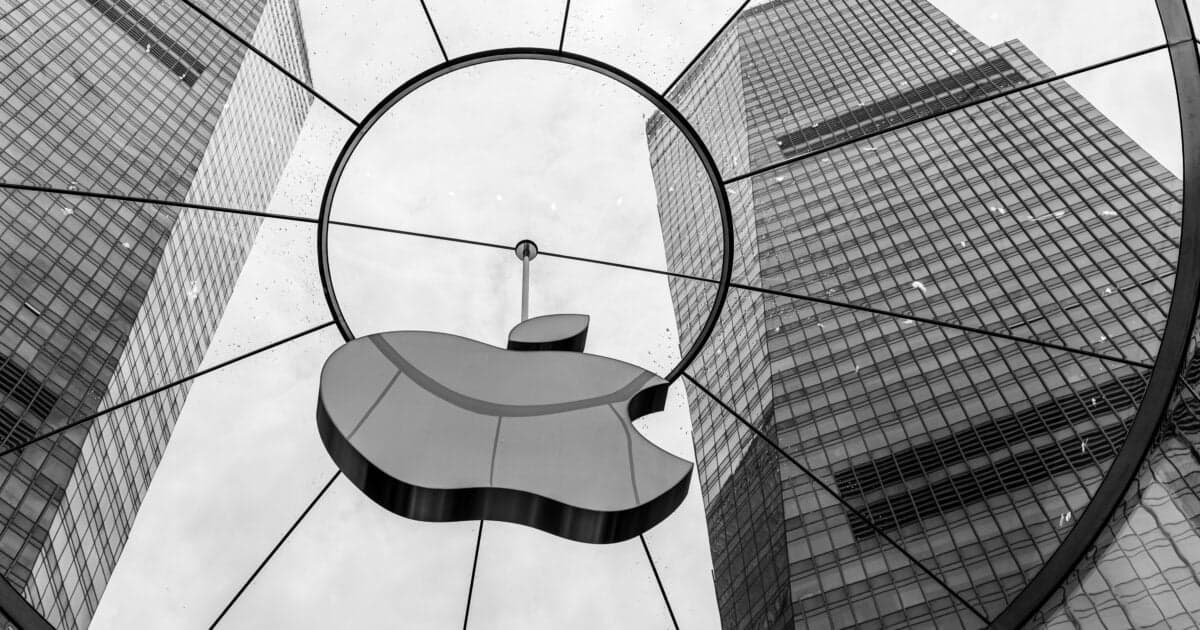Vertiv (VRT) Soars − What to Know Before You Buy

Shares of Vertiv (VRT) are up around 55% over the past month, well outpacing the Nasdaq Composite Index and grabbing investors' attention.
But after such a monster run higher, is this data-center-infrastructure company still a buy at today's levels?
Let's dig in to see what Vertiv does, why the stock is soaring, and what an investor should do about it today...
Vertiv Provides Critical Cooling Components for AI Data Centers
Generative AI models like ChatGPT and DeepSeek may get splashy headlines, but underneath these tools sits an unsung layer of electrical and thermal activity.
Step into a modern data center, and you can feel this activity. Rows upon rows of high-powered servers hum loudly, reaching up to 96 decibels − comparable with a motorcycle or a subway train passing by.
The intense computing activity that generates this racket can also produce enough energy to heat several thousand homes for an entire year.
This is the world that Vertiv designs and builds for − power distribution, battery systems, and precision cooling. Increasingly, the company is also known for whole, prefabricated "AI factories" that arrive on site like giant Lego blocks, ready to energize graphics processing units ("GPUs").
Think of Vertiv as the "plumbing" underneath critical AI infrastructure.
That might not sound exciting. But providing AI "plumbing" may make Vertiv one of the most valuable companies of the coming AI revolution.
Vertiv Has Three Critical Product Segments You Need to Know
Think of the data-center stack as a pyramid...
At the top are the applications we use, in the middle are the servers and networking gear, and at the base is the critical infrastructure that keeps everything powered, cooled, and running 24/7.
Vertiv focuses exclusively on that base.
And while everyday AI users never see this infrastructure, it's big business. Vertiv reported more than $2 billion in revenue for its first-quarter earnings.
Vertiv's largest segment is "Critical Digital Infrastructure Technology Products," which accounted for 78% of revenue.
That business includes product solutions like:
Critical Power: Data centers can't afford the slightest power hiccup. To that end, Vertiv supplies:
- UPS (Uninterruptible Power Supplies): big industrial batteries that keep servers running if the grid goes down.
- Busways: heavy‑duty "power strips" that move electricity safely around the room.
- Switchgear: smart circuit boxes that can reroute or shut off power to protect the hardware.
- High‑efficiency rectifiers: These devices turn wall power into the lower‑voltage direct current that electronics need, wasting as little energy as possible.
Thermal Management: Computer chips turn electricity into heat − especially with some new AI processors consuming up to 700 watts (for context, that's roughly equivalent to seven laptops running under heavy use). Vertiv offers a variety of ways to pull that heat out:
- Traditional air conditioners (chilled‑water or direct‑expansion): These are like supersized air-conditioner units that cool the whole room.
- Liquid cooling: For the hottest gear, Vertiv provides:
Immersion tanks: The servers are dunked in a special nonconductive fluid that carries heat away.
Cold‑plate systems: metal plates sitting right on top of the chips, with coolant flowing inside like a car radiator.
Integrated Modules: Instead of building a data‑center hall piece by piece on‑site, Vertiv can assemble whole "data‑hall blocks" in a factory. These prefabricated modules arrive on trucks, crane into place, and bolt together. The result: construction timelines shrink from several months to just a few weeks.
The singular focus on producing (and servicing) all this critical infrastructure is part of Vertiv's reputation. As industry insider Sean Graham of the International Data Corporation put it recently:
"[Vertiv is] the only company I'm aware of that has an end-to-end data-center-infrastructure solution, where that's the only thing they focus on."
In time, this deep expertise could prove to be a wide moat.
Yet another competitive edge is evidenced by Vertiv's recent partnership with another AI powerhouse...
Vertiv Is an Nvidia Partner... And It's Paying Off
A modern AI server rack now drinks as much as 100,000 watts or more − roughly 10 suburban homes' worth of power.
Try to cool that with ordinary air conditioning and you'll end up blowing a hurricane through the room while the chips still sweat.
The answer is liquid. This involves coolant flowing right up to the silicon, stealing heat the way a car radiator steals heat from its engine.
Vertiv sells the whole liquid-cooling toolkit. Cold plates sit on top of each processor like metal ice packs. Rear-door chillers clip onto the back of a cabinet and act like a built-in radiator grille. And the coolant distribution unit ("CDU") − think of it as the room's beating heart − pumps fluid through miles of insulated piping.
Now, drop Nvidia's (NVDA) new Blackwell chips into the picture. Each one can sip a kilowatt ("kW") of power, and a fully loaded rack could top 140 kW.
Nvidia picked Vertiv as its lead supplier of CDUs for Blackwell systems, so the two companies' fortunes are tightly linked.
This bodes well for a number of reasons:
Orders first, chips later. Data-center builders book cooling gear three to six months before the GPUs ship. Management says, "CDU demand and Blackwell demand coincide," which means every time Nvidia locks in a Blackwell delivery window, Vertiv's order book jumps almost in real time.
Higher-margin mix. Liquid gear carries richer margins than legacy air handlers, so every Blackwell rack that swaps air for coolant fattens Vertiv's profits.
Turnkey moat. Vertiv and Nvidia even co-engineered a prefabricated "AI factory" that includes power gear, cooling loops, and control software − everything validated to run Blackwell out of the box.
Italian firm iGenius has the first one en route. Instead of six months of concrete and cables, operators can crane the module in and go live within weeks.
Put simply, as Nvidia keeps pushing the thermal envelope, Vertiv sells the only plumbing certified to keep those chips from melting down − and it gets a clear, early signal of demand every time a new GPU launch inches closer.
Why Vertiv's Stock Fell Earlier This Year
All this technical prowess notwithstanding, the start of 2025 has been tough for Vertiv.
On January 20, a Chinese AI company called DeepSeek threw cold water on the "more AI equals more power" narrative.
DeepSeek unveiled an open-source AI model that purported to handle advanced reasoning tasks while using a fraction of the electricity of its U.S.-based peer models. Analysts called it a "Sputnik moment" for energy-efficient AI.
Headlines speculating that lower-watt AI could blunt demand for data-center cooling sparked a knee-jerk sell-off across the entire AI complex. Vertiv's stock dropped 28% within a week of hitting an all-time high on January 23.
Investor nerves were probably still a bit raw when Vertiv reported fourth-quarter results on February 12. Although the headline numbers looked solid, management's 2025 guidance came in below the more optimistic estimates, and traders pounced. Shares slid almost 22% in the 10 days following the release.
Our colleagues over at Stansberry Innovation Reports captured the mood when they stopped out of the Vertiv position in their model portfolio on February 25. As analyst John Engle put it:
This is a disappointing outcome, as we recently named Vertiv our No. 1 AI stock for 2025. Our research showed that Vertiv's critical role in AI-driven data-center infrastructure positioned it for strong gains... Still, we continue to see long-term growth potential in data-center infrastructure, particularly in power and cooling solutions.
Then, on April 2, President Donald Trump announced the "Liberation Day" tariff package that would slap a blanket 10% duty on all imports and even steeper levies on selected countries.
Markets recoiled. The S&P 500 dumped more than 12% in the four sessions following the announcement, and hardware names − still perceived as tariff-sensitive − followed the index lower.
Vertiv hit a 52-week low of $59.41 on April 4. (For those keeping score, that's a 66% decline in just under 6 weeks.)
This free fall was surely hard to watch for shareholders.
But the same forces that rattled investors − AI power-use uncertainty, cautious guidance, and tariff shock − also reset expectations to more reasonable levels. With sentiment washed out, any whiff of operational strength could spark outsized upside.
That set the stage for the next act. And, as it turns out, the recovery seems to be well underway.
Momentum Snaps Back: Q1 Lights a Fire Under Vertiv
After six bruising weeks of bad headlines, Vertiv's first-quarter scorecard landed like a defibrillator on April 23.
Revenue leapt 24% year over year ("YOY") to $2.04 billion, driven by unrelenting demand for power and liquid-cooling gear.
Adjusted earnings jumped 49% YOY to $0.64 a share, topping Wall Street's reset expectations.
The book-to-bill ratio clocked in at roughly 1.4 times, pushing its backlog to a record $7.9 billion − about $1.6 billion higher than the same quarter last year.
On the earnings call, CEO Giordano Albertazzi highlighted "continued acceleration of AI deployments" and noted that orders tied to Nvidia's Blackwell chips are "showing up exactly when we thought they would − three to six months ahead of silicon."
Management promptly nudged full-year organic-sales guidance up to around 18% growth, even in the face of newly announced tariffs.
Wall Street cheered. Shares rallied more than 20% intraday on April 23 as multiple brokers reinstated "buy" ratings they had shelved in February.
Strength on the income statement echoed through the balance sheet. Free cash flow ("FCF") covered capital expenditures with room to spare, and Vertiv's debt-to-earnings ratio has slid to its lowest level since the company went public in 2020.
Rating agencies have taken notice too: Fitch awarded Vertiv a first-time investment-grade rating of BBB- (stable) on April 22, citing the company's "mid-to-high BBB" cash-flow profile and ample liquidity.
Albertazzi framed the bigger picture succinctly: "We haven't changed the market − we're just executing a little better every quarter."
In short, Vertiv turned a sentiment washout into an operational victory − resetting the bar higher just as AI infrastructure spending shows no sign of cooling off.
Does Vertiv's Rebound Make It a Buy Today?
Vertiv is clearly a high-quality business. Its equipment is mission-critical, its backlog just hit a record $7.9 billion, and the company now carries an investment-grade credit rating.
FCF easily covers day-to-day spending, leaving extra room for debt paydowns or the occasional bolt-on deal. In short, the plumbing of the AI age is throwing off plenty of cash.
This strength has not gone unnoticed. Even after the winter sell-off, Vertiv shares now trade around 28 times the next 12 months' estimated earnings − a shade higher than the broader market's mid-20s multiple.
Investors are paying up for the story, and they'll expect the company to keep beating guidance, navigate new tariffs, and stay ahead of "greener" AI designs that might cool demand for heavy-duty chillers.
If management keeps executing, today's price could prove fair. If growth stutters, the stock offers little margin for error. For most readers, that mix of promise and pressure makes Vertiv less of a "slam dunk" and more of a "watch this space" candidate.
Keep an eye on the next couple of quarters − and on those Nvidia Blackwell shipment dates − before deciding whether to suit up for the long haul.
Regards,
John Robertson




